Stockade Cuba – isolated for generations by a US embargo and fidelity to communism – finds itself suddenly at the centre of the Americas, thanks in part to circumstance but mainly to the craft, guile and luck of its president, Raúl Castro, brother of the revolution’s founding father, Fidel.
US secretary of state John Kerry was in Havana last week for the first time since reopening his government’s embassy here last year, now preparing for the imminent and historic visit of Barack Obama for two days on 21 March, the first by a US president since Calvin Coolidge inaugurated the pan-American congress here in 1928. President Dwight Eisenhower severed diplomatic and trade relations in 1961.
And to cap the string of illustrious visitors who have come through Havana recently – since a tour of the island by Pope Francis last year – the Rolling Stones arrive on Good Friday, two days after Obama’s departure, for a free open-air concert at the Sports City stadium. This event more than anything pronounces once-fortress Cuba wide open to the world.
The concert organiser, Osmani López Castro of the Cuban Music Institute, says he expects 400,000 people to hear the Stones and reports that half the island’s security forces will be on duty. “We’re creating conditions so that everyone who wants can enjoy the historic spectacle in a good environment,” he said. On a different diplomatic level, Raúl Castro has for four years hosted – and acted as guarantor for – epic peace talks in Havana in the hope of bringing an end to the war between the Colombian government and the world’s longest-running insurgency by the Marxist Fuerzas Armadas Revolucionarias de Colombia, Farc, which has raged since 1964 and dates back to violence that erupted in 1948, causing the largest internal displacement of people in the world. Since 2012, peace negotiators have been holed up in a hotel in Havana as Castro’s guests to try to end the war.
The Cuban press has prominently acclaimed Castro’s “positive” sponsorship of, and meetings with, the peace delegations led by Colombian diplomats and two generals, opposite the four senior main commanders of Farc and its secretariat. Colombia’s ambassador to London, Osorio Londoño, said: “Without Raúl Castro and [the late] President Chávez of Venezuela, this peace process would not have happened.”
The supreme commander of Farc, Rodrigo Londoño, known by his nom de guerre Timochenko, said last week: “We are working towards change in Colombia to end the violence in political life.” His lead negotiator, Iván Márquez, told the Observer: “Our fighters want peace; we are ready to take our programme for reforms into political life”; while a senior figure likely to lead a post-Farc presence in elective politics cautioned: “Just because we’ve come in from the battlefield doesn’t mean they’ll defeat us here at the negotiating table.”
A lead negotiator for the government, veteran diplomat and former deputy defence minister Sergio Jaramillo, said in Havana last week, despite a bomb attack in Bogotá: “When we started this, no one had talked about peace for eight years. Now – unthinkable then – we’re very nearly there”.
Cuba is open for business as well as peacemaking. For a long time now, European, mostly Spanish, and Canadian companies have invested in tourism to Cuba. But the end of the embargo has begun what will be the total transformation of Havana in a matter of months.

For years, visitors to Cuba have been the curious, the adventurous and politically sympathetic; photographers enthralled by the peeling colonial slums, vintage cars and sensuous beauty of the people and their country. But for many it might as well be the Bahamas or Costa Blanca – as holidaymakers’ fear of terrorist activity in north Africa encourages them to try the mojitos and cigars of Cuba instead. Central Havana now heaves with cargo-shorts, logo T-shirts and a photo-opportunity on every corner.
Its famously crumbling architecture is slowly but surely undergoing a wash-n-brush-up; a lovely old marketplace adjacent to the Parque Central is closed and wrapped in scaffolding, to make way for yet another luxury hotel providing berths for a new mass tourism, which is still, for the most part, billeted in licensed “casas particulares” – private houses accountable to the state, allowed to take in guests. “Every time I return, something else I know has changed,” says María Jimena Duzán, a Colombian writer who has been visiting Havana for decades. “The Americans are here, and that changes everything. One of my favourite places, the lovely old Plaza Vieja, just isn’t the same place, totally transformed.” Starbucks and Subway on the Parque Central? “Oh don’t, please,” she winces, “but indeed, this is just the start of what we’re looking at for Cuba.”
Obama’s visit thinly masks the economic bonanza awaiting US companies eager to invest in the island only 90 miles from Florida – not least those headed by Cubans from that state, anxious to claim their share of a new economy after two generations in exile.
“Cuba is a highly symbolic country politically,” said John Paul Rathbone, the Latin America editor for the Financial Times. “Soon the original revolutionary generation will be dead. The change in US policy recognises this. And Obama’s trip to Havana will be a carnival of stage craft – hopefully a glorious one – that further encourages change, and perhaps even an early end to the embargo and a speedier transition to whatever-comes-next in Cuba.
“A political cycle lasting more than 50 years, which has defined at least two generations in Latin America, is drawing to a close. You can see that in the Colombia peace talks too. But the relative economic significance of all this? Peanuts! When was the last time the world became so excited over a market no bigger than the Dominican Republic or Puerto Rico?”
The most staggering change is, of course, the arrival of the Americans, spearheading Obama’s commercial agenda and reverting Cuba to a 21st-century variation of its old role: the naughty weekend in the sun, music and sleaze – the exploitative playground that enraged Fidel Castro, his brother and Che Guevara sufficiently to overthrow it, but which the brother now nurtures, carefully, with turbo-capitalist China rather than the purist USSR as role model.
The opening up of the country presents some Cubans with long-awaited opportunities. Jon Lee Anderson, the biographer of Cuba’s most popular figurehead, Guevara, described the country as “the best educated in Latin America, but without an economy”.

Now that economy has arrived in force, so that taxi drivers like Ernesto González may sell their trusty 1951 Pontiacs to American collectors – the cars, sought after “vintage retro” in the US, have been a necessity for Cubans under the embargo.
Thus the question raises itself: how much money swilling into Cuba will find its way to Havana’s equivalent to Cartagena’s shanty slums? These same tourists have been coming to neighbouring Jamaica and even Haiti for decades, yet Trenchtown and Port-au-Prince see little or nothing of what leaves their wallets.
There is also this: Havana is by far the safest Latin American capital; drug consumption is minuscule and organised crime of the kind known to Mexico City, Bogotá or San Salvador is nonexistent. But no multinational corporation will be as anxious to invest in the newly open Cuban market than the Mexican narco-cartel Los Zetas, which controls the Caribbean, whose heartland territory is no farther than the short distance travelled by the tiny Granma boat that carried Castro’s revolutionary vanguard across the Gulf from Mexico in 1956 – and whose product can cater in its pure and expensive form to Cuba’s partying visitors, and as basic bazuco, crack, for the local poor. No one wants to talk about how that will change Havana.
Indeed, the Cuban press – comprising three daily papers: Granma, Rebel Youth and the more interesting Workers – reports economic change and “hygene-isation” of the country with upbeat optimism, draped in a socialist lexicon.
Inevitably, the imminent arrival of Jagger, Richards, Watts and Wood causes the most widespread popular frisson. “Too good to be true” runs a page-lead headline in Monday’s edition of Trabajadores, (Workers). Reporter Yuris Nórido allows himself a moment of subjective outburst unusual for these papers, beneath a photograph of the grinning rockers whose first single postdated the Cuban revolution by four years: “The dream,” writes the author, “is about to become reality.”
People such as the owner of Casa Gaia, however, feel equivocal about all this. Of course, Esther Cardosa looks forward to the Stones’ visit, and the manager of her guest house, Roberto, is salivating at the prospect (though he wishes it was the Beatles, whom he calls “the greatest teachers in my life”).
Cardosa is among Cuba’s great creative figures, an actress and director of drama whose story has been central to the renaissance of independent, innovative and surreally creative Cuban drama during the 80s and 90s. Plays are performed to the highest standards of any country, often walking a high wire between free expression and official approval. Some of Cardosa’s best work with Cuba’s first non-state theatre group, which she formed, adapts plays by Spanish playwright Federico García Lorca and Shakespeare to subliminally reference the Cuban regime.
But while Havana prepares for construction and renovation on a massive scale, the beautiful three-tier stage space at her theatre Casa Gaia – on what she thinks could become Havana’s “cultural corridor” – with performance areas both covered and al fresco, is like many of Havana’s lovelier buildings, falling down.
Cardosa flies to Madrid and Toronto in search of help and money, for what is not only her dream but something of Cuba she wants the world to see in addition to peeling plaster, vintage Chevrolets, cheap flesh and Cuba’s superlative jazz commodified for the mid-brow tourist palette. “A real, creative and living Cuba, which speaks of our art, passion, history, talent and drama”, she says. But all she hears in response from the “investors” is whether her property would be suitable for “conversion into a VIP hotel for prostitution. This is Cuba’s choice now,” she says. “What kind of country do the investors – and our government – want Cuba to be, now that Obama is coming and we are open for business? What kind of business, and who will reap the reward?”
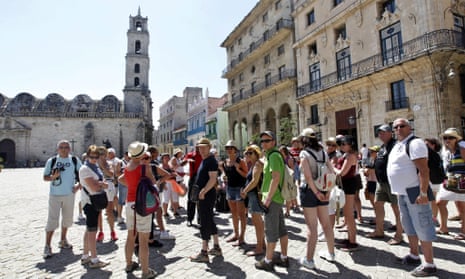

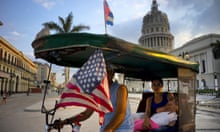
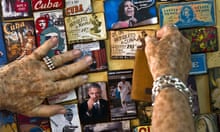
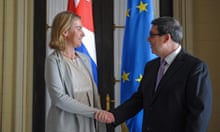
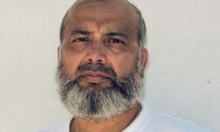

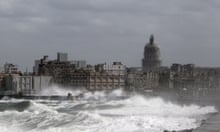
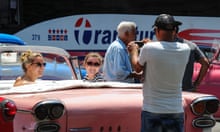
Comments (…)
Sign in or create your Guardian account to join the discussion